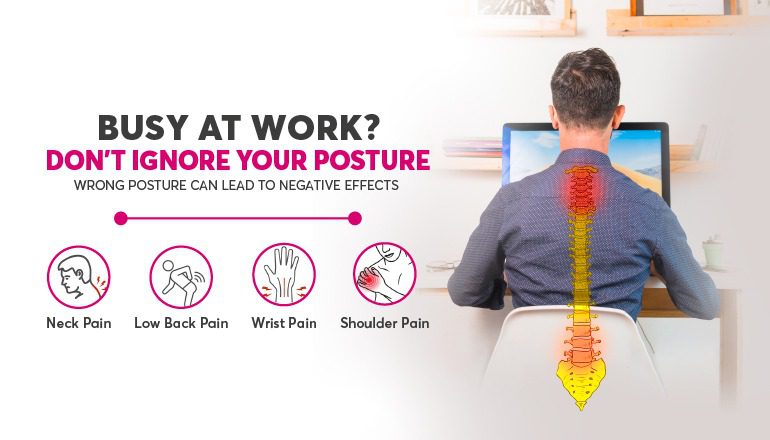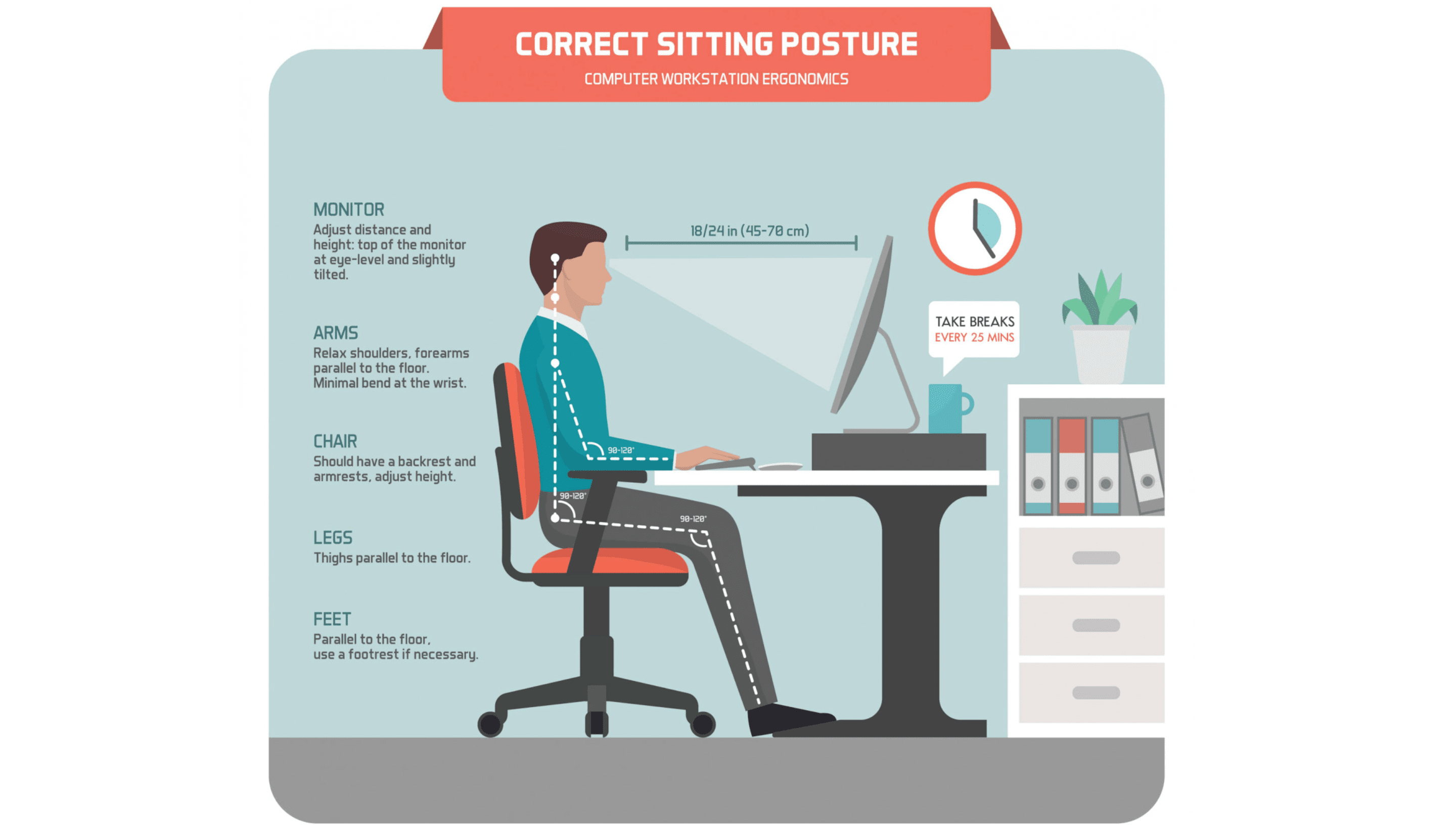Author: Dr.Reneesh (Consultant Orthopedic Surgeon – WELLKINS Medical Centre)
In today’s bustling work environment, an increasing number of employees are experiencing work-related disorders that impact their orthopedic health. As a consultant orthopedic surgeon, my experience has highlighted the profound effects of poor ergonomics on the musculoskeletal system. In this article, we will delve into common work-related orthopedic disorders and explore effective ergonomic solutions that can significantly alleviate these issues, fostering a healthier, more productive workforce.
Workplace exposure to risk factors can lead to health issues known as work-related disorders, occupational diseases, or occupational disorders. These ailments, which can vary from acute wounds to chronic illnesses, are frequently linked to particular work-related activities or environments.
Muscles, nerves, blood vessels, ligaments, and tendons are all impacted by musculoskeletal disorders (MSDs). Workers in a wide range of professions and sectors may be exposed to risk factors at work, including lifting heavy objects, bending, reaching aloft, pushing, and dragging large loads, adopting awkward body positions while working, and repeatedly performing the same or similar tasks. Workers are more likely to be injured if they are exposed to these established risk factors for MSDs.
In our modern, fast-paced digital landscape, work-related disorders have surged as significant concerns cutting across numerous industries. The relentless pace of the digital age, coupled with demanding job roles, has led to a notable increase in these issues. From office settings to manufacturing floors, employees across various sectors now grapple with the challenges posed by work-related disorders.
Common Work-Related Orthopedic Disorders
Wrist Pain (Carpal Tunnel Syndrome):
Often caused by repetitive hand and wrist movements, Carpal Tunnel Syndrome can lead to pain, numbness, and weakness in the affected hand. Improper functioning of the median nerve occurs due to pressure within the carpal tunnel, leading to pain and tingling sensations traveling up the arm to the forearm. This discomfort can even disturb sleep, causing nighttime awakenings due to pain.
Tennis Elbow:
Inflammation of tendons due to repetitive motions, leading to localized pain and reduced joint mobility. Tennis elbow, a condition medically known as lateral epicondylitis, can indeed arise from work-related disorders. Despite its name, this condition is not limited to tennis players; it can affect anyone engaged in repetitive arm motions, including certain work activities.
Lower Back Pain:
Prolonged sitting or improper lifting techniques can strain the lower back, causing chronic pain and discomfort. Lower back pain is a prevalent condition affecting millions worldwide. It can result from various causes, including poor posture, muscle strain, or underlying medical conditions. Sedentary lifestyles, heavy lifting, and obesity often contribute. Symptoms range from mild discomfort to debilitating pain, limiting mobility and impacting daily life. Treatment includes rest, exercise, and sometimes medication or physical therapy.
Neck Pain:
Poor posture and prolonged screen time strain neck and shoulders, leading to stiffness and pain, hindering productivity and well-being. Combat discomfort with ergonomic adjustments such as proper chair and screen height. Take regular breaks, perform targeted exercises, and invest in ergonomic tools. Prioritize your health for a pain-free, focused work experience, ensuring both physical and mental well-being. Your dedication to a healthy workspace will yield improved productivity and a better quality of life
Shoulder Pain:
Shoulder pain often stems from work-related disorders, especially jobs involving repetitive overhead motions or heavy lifting. Conditions like rotator cuff injuries and frozen shoulder can result, affecting productivity and causing discomfort. Ergonomic workstations, proper lifting techniques, and regular breaks can mitigate these issues. Early intervention and workplace adjustments are crucial for preventing chronic shoulder pain and ensuring a healthier, more productive workforce.
Knee Pain:
Knee pain due to work-related disorders is a significant concern, particularly in jobs involving prolonged standing, heavy lifting, or repetitive kneeling. Conditions like tendonitis and bursitis can develop, impacting mobility and work performance. Ergonomic adjustments, proper footwear, and regular rest intervals are essential. Addressing workplace factors and promoting proper techniques can alleviate knee pain, ensuring a healthier and more comfortable work environment.
Ankle Pain:
Ankle pain due to work-related disorders often results from tasks involving prolonged standing, repetitive movements, or improper footwear. Conditions like tendinitis and sprains can cause discomfort and hinder mobility. Ergonomic shoes, supportive insoles, and regular breaks can help. Addressing workplace factors, providing proper footwear, and promoting correct posture can alleviate ankle pain.
Expert Solutions and Recommendations
1-Proper Desk & Chair Setup:
Encourage employees to invest in adjustable chairs and desks. Chairs should support the natural curve of the spine, and desks should allow for proper arm and wrist positioning while typing.
Correct Sitting Posture and Computer Workstation Ergonomics:
Monitor:
Adjust the distance and height: Place the top of the monitor at eye level and tilt it slightly, maintaining a distance of 18-24 inches (45-70 cm).
Taking Breaks:
Relax shoulders, keep forearms parallel to the floor, and maintain a minimal bend at the wrist. Take breaks every 25 minutes.
Chair:
Use a chair with a backrest and armrests. Adjust the height and maintain an angle of 90-120° for the hips and knees.
Legs and Feet:
Keep thighs parallel to the floor and ensure feet are also parallel to the floor. Use a footrest if necessary.
Remember, consistency in posture is key to preventing discomfort and strain.
2-Correct Lifting Techniques:
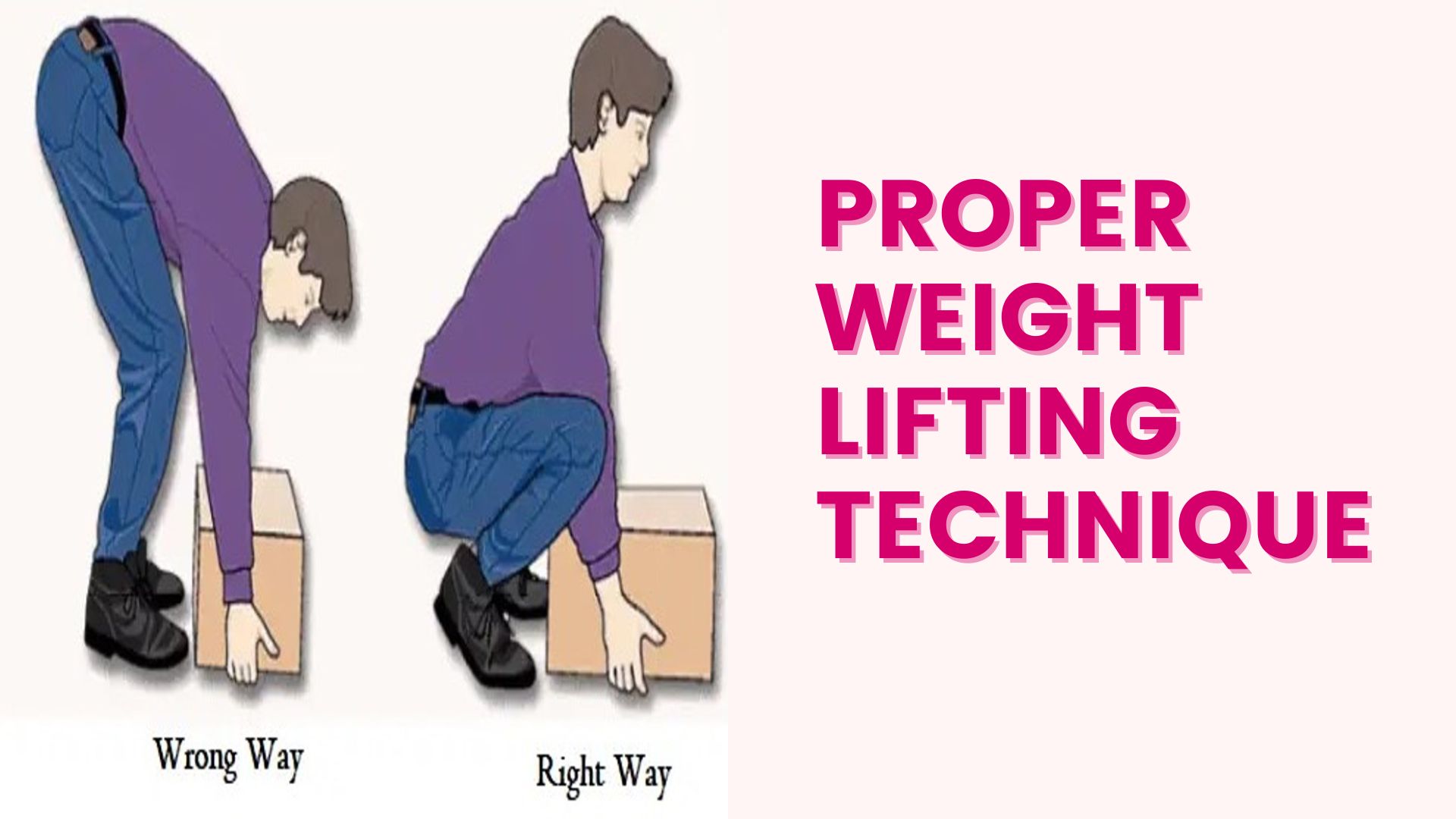 In our everyday lives, there are frequent occasions when we need to lift heavy items, be it moving furniture or unloading groceries. Safe lifting practices are invaluable in these situations. Unfortunately, using incorrect techniques often leads to back pain and injuries. Therefore, it is crucial to grasp and implement proper lifting methods for our overall health and well-being in the long run.
In our everyday lives, there are frequent occasions when we need to lift heavy items, be it moving furniture or unloading groceries. Safe lifting practices are invaluable in these situations. Unfortunately, using incorrect techniques often leads to back pain and injuries. Therefore, it is crucial to grasp and implement proper lifting methods for our overall health and well-being in the long run. 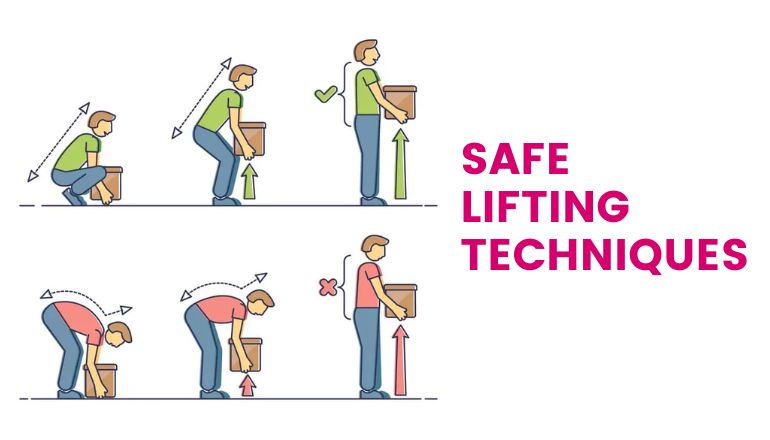
Safe lifting techniques are paramount in preventing injuries, especially in workplaces where lifting is common. Here’s why they are crucial:
1. Injury Prevention: Proper lifting prevents strains, sprains, and muscle tears, particularly in the vulnerable back area. Lower back pain and injuries often stem from poor lifting practices.
2. Long-term Health: Incorrect techniques can lead to chronic back pain and musculoskeletal disorders. Safe lifting maintains long-term health, averting complications later in life.
3. Increased Productivity: Safe lifting reduces injuries, minimizing workdays lost. Additionally, efficient lifting enhances task speed and manageability, boosting workplace productivity.
In essence, safe lifting techniques are indispensable for personal and occupational well-being, preventing injuries, ensuring long-term health, enhancing productivity, and reducing financial strain for individuals and organizations alike.
3.Supportive footwear
Supportive footwear is a crucial aspect of workplace health, especially for employees who spend extended periods on their feet. Recommending comfortable and supportive footwear not only enhances immediate comfort but also contributes significantly to long-term well-being and productivity.
4.Right way to use the phone
Holding your phone between your ear and your shoulder places a strain on the muscles in your beck, upper back and shoulders. Symptoms of cradling your phone include tightness and pain on one side of your neck only, which feels better with stretching. Normally, this can be resolved quickly.
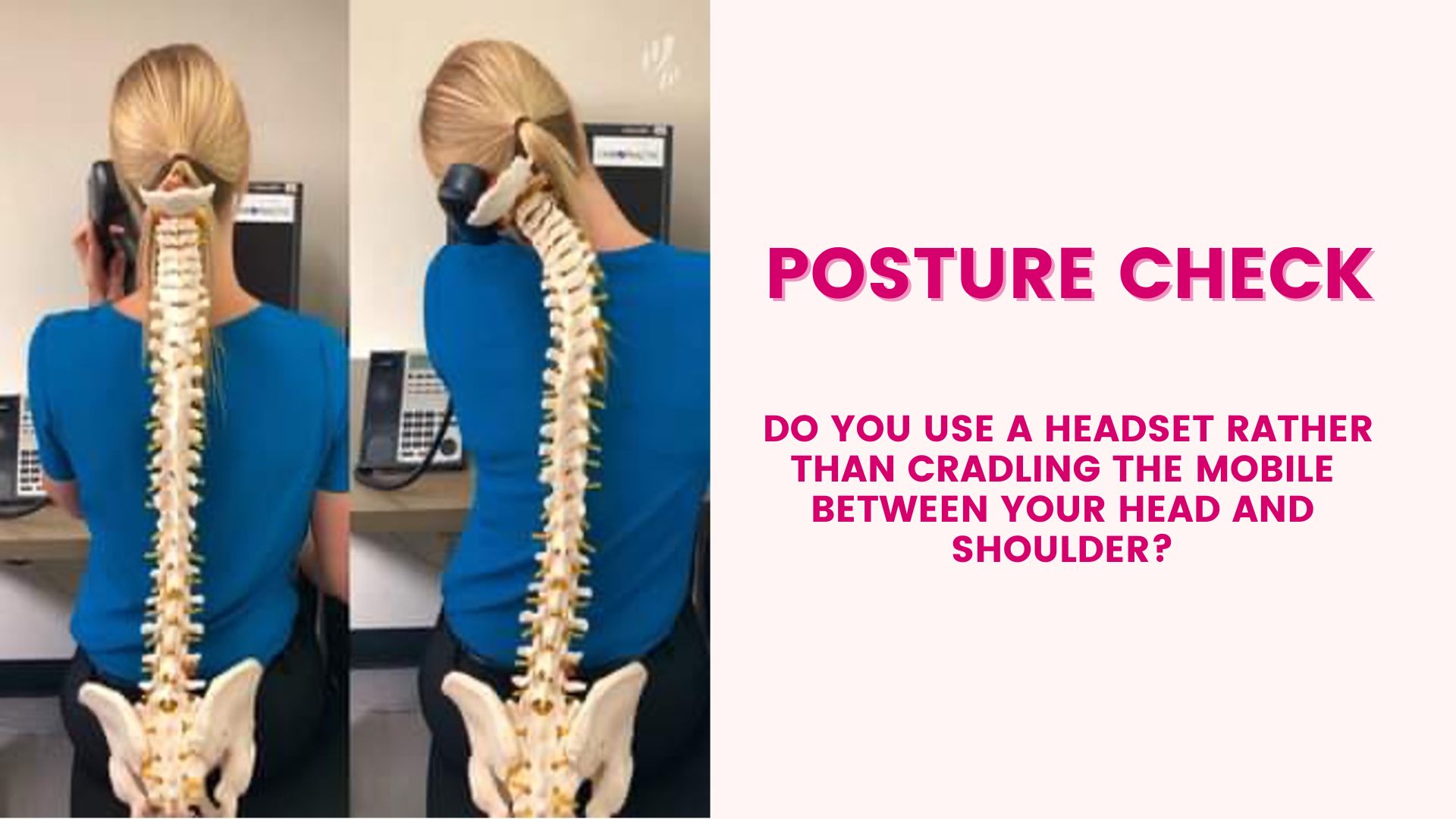
As a consultant orthopedic surgeon, I firmly believe that proactive measures and proper education are pivotal in preventing work-related orthopedic disorders. By implementing ergonomic solutions in the workplace and encouraging employees to prioritize their musculoskeletal health, businesses can foster a culture of well-being and productivity. It is essential for both employers and employees to collaborate, ensuring that the workspace is conducive to orthopedic health, enabling everyone to work comfortably and without the burden of work-related orthopedic disorders


